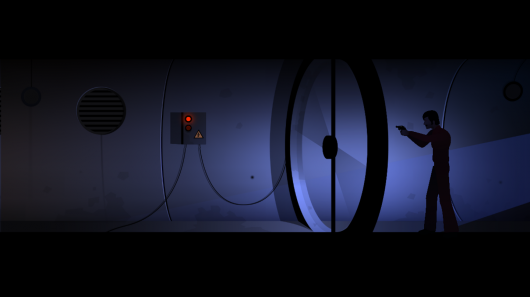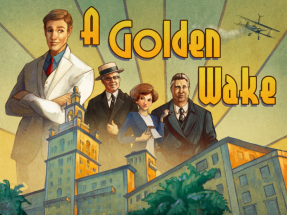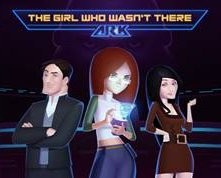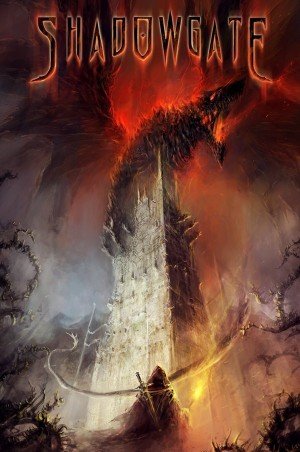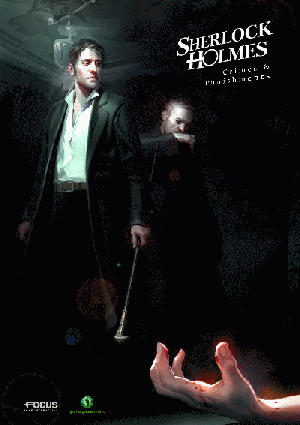Review for The Silent Age page t
Note: Since time of writing, this game has been enhanced and re-released on PC and iOS with HD graphics and full voice-overs. This review is based on the original iOS release.
Ah, the 1970s. Time of free love, bandanas, mustaches and bell-bottoms. War abroad and activism at home. The Cold War heating up. And a janitor named Joe who's quietly getting on with trying to save the world, cleaning up the biggest mess of his career. After ending last year's impressive free first episode on a cliffhanger, Danish developer House on Fire is back with the second (and concluding) commercial installment of The Silent Age, available now for iOS and Android. Can the sequel live up to the early promise and send the series out with a bang? The answer, for the most part, is yes – episode two may be more of the same, but that's no bad thing.
It's 1972, and Joe's a Vietnam vet who's now working as a janitor for the mysterious Archon National Defense Services. Not that anything's very mysterious in Joe's life, as he stolidly goes about his business, unfazed even by the drums of almost certainly toxic chemicals that are stored in his "office" (supply closet to you and me). Archon needed him to help them out, you see, and he obliged because that's just the kind of guy he is. They even gave him an award for it that he proudly displays on his wall. Life's good when you just keep your head down and don't question anything.
Until, that is, the janitor who does the top secret labs downstairs goes missing and they ask him to take over that job as well. (Just think of all the extra responsibility! Of course, they can't spare him any more money or give him a fancy title, but they're sure he knows how it is.) Down in the lab, everything's spick-and-span. Apart from the mysterious blood trail... leading to an old guy who takes a break from dying just long enough to tell Joe that he's come back in time to save the future, but got shot before he could complete his mission. Could Joe take the man’s handy-dandy pocket time machine and go visit his “present” (future)-day self to explain things?
Now, most people would be freaking out right around this point. Dead guys, time machines, only you can save mankind? It's a lot to cope with. But not for Joe. Not even when security arrives and finds him standing over the dead body, leaving him to try explaining all this to the police. Joe just gets on with things as best he can. Did his experiences in 'Nam make him this way, or was he just never a very curious person? Regardless, he makes a refreshingly understated change from your usual protagonist, being neither a gung-ho, super-confident hero nor a mousy type who never asked for this and spends the whole time in denial. He just takes it all in stride and gets on with the monumental task at hand.
That pocket time machine turns out to be central, both to Joe's quest and the game. Once he gets it charged up, it allows him to jump between his present in 1972 and the time the mystery traveller came from, 40 years in the future. (Which, by no great coincidence, happens to be pretty much the present day for us.) The world he jumps forward to, though, is very different than ours: it's a post-apocalyptic wasteland, deserted, broken and decaying. That old guy wasn't kidding about it being the end of the world!
The game makes much of the contrast between these two worlds: the vibrant, richly-coloured ‘70s and the grey, abandoned future. Pretty much every location you visit is accessible in both time periods and can be switched between at will, with a whoomph that sounds like an old-fashioned flashbulb. All the same fixtures and fittings are found in both versions, but where in the ‘70s they're shiny, new and well-maintained, in the future they're rusted, smashed and weather-worn. The fact that they're otherwise so similar, with the same objects in more or less the same places, gives an eerie sense that whatever killed the world, it happened fast.
The graphics and sound really help to underscore these differences and build atmosphere. The visuals in particular are delightful, in an understated, highly stylised way. Crisp and smoothly animated, they forswear detail for smooth gradients, creating a look that's clean and simple without being bland. There are also some nice environmental effects, such as showers of rain and dust motes swirling in the air. This is a very stylish version of the ‘70s, too: the time traveller's house in particular, when you eventually find it, looks like something out of a coffee-table architecture book, or the lair of a Bond villain. I almost expected to open the living room door and find the Rat Pack hanging out, drinking scotch and singing by the fire. Otherwise, Joe spends most of his time in austere, institutional settings such as the Archon offices/labs, a police station and a hospital. Of course, this wouldn't be an adventure game without a few detours into unexpected places; there's also a sewer, oversized ventilation ducts complete with a giant spinning fan, and a secret room or two. Not to mention a hip and funky ‘70s bar.
Aurally, you get sporadic ambient background music (usually serving to build up the eerie mood) and sound effects such as rustling, wind and rain. There are exceptions (such as that funky bar) but generally the soundtrack is effective without pushing itself forward too much, setting the mood without distracting you from the task at hand. It is noticeable, however, that quite a lot of it has been recycled between the two episodes.
There's no voice work, though. Joe communicates via messages that drop down from the top of the screen, while the (relatively few) conversations use a small pop-up window. This works well enough, but while conversations require you to tap a "forward" button to advance through them, Joe's alerts simply appear and disappear on their own schedule. There's plenty of time to read them, but I'd often finish one well before it disappeared and carry on playing, only to realise that he had more to say. All too frequently, I wouldn't get to find out what that was because by that time I'd tapped on an item, making the rest of his musings disappear, replaced by his opinion of the new object. It felt like I was being rude and interrupting him all the time, so I eventually took to waiting patiently to be sure that he was finished before moving on. It's all very much in keeping with his slow, lugubrious character, but it could be frustrating at times.
Gameplay-wise, The Silent Age gets a lot of mileage out of Joe's time device. More often than not, it's just used to get you past an obstacle. Door blocking your way? Just jump forward in time and it'll be hanging off its hinges. Missing an item you need? Check the other time zone. The few times I got stuck, it was generally due to that last one: I'd failed to check all possible locations in both time zones and missed a crucial object. On the other hand, every so often you have to stop and think more carefully about the consequences of all your time travelling: how will the changes I make in the past affect the future? Can I swap an impossible problem in the future for a more manageable one in the past? For example, one puzzle involving some poison ivy almost had me stumped until I realised I needed to take a step back. My personal favourite, though, came when I needed to scrounge up an apple but all I had was an apple core; solving that one really required thinking fourth-dimensionally, but putting all the pieces together gave me a warm glow of satisfaction. I just wish there were more such moments.
Aside from the time travelling, gameplay consists entirely of inventory puzzles, and since you can't combine items (at least, not in your inventory) it's difficult to get too stuck. Unfortunately, there is a certain amount of pixel hunting required at times, which can be particularly problematic if you're playing on a phone rather than a tablet. The graphics, as lovely as they are, don't help with this: only a few objects in each scene can generally be interacted with but (particularly in the future locations) there can be a lot of decorative clutter. Once or twice, I mistook a vital item for part of the scenery.
The interface is very simple and streamlined: just an inventory bar at the bottom of the screen. Tapping on an object examines it or picks it up, and using it is a matter of tapping on the item in your inventory and then on the object you want to use it with. Similarly, tap somewhere to walk there or double-tap to run. There's no explicit save mechanism – you can either pick up where you left off or restart the current chapter from the main menu – so that's it. Given the pixel hunting issues, it would have been nice to have a hotspot highlighter, but other than that it's nice and intuitive. If I'm being picky, quick travel would also have been handy: you spend quite a bit of time traipsing around the place, especially with the time-hopping back and forth to navigate obstacles.
The one real shortcoming is the plot. Overall, it's solidly-written, but after laying out the scenario in the first chapter of the first episode, Joe spends the rest of that episode and the first half of the next just trying to get from place to place. It's only in the last quarter of the game that the plot kicks back into high gear again. Considering that you're racing to prevent the end of the world, all that time spent puzzling your way past one barrier after another feels a little bland, narratively speaking. Of course, many quest-type stories (e.g. The Lord of the Rings) are built around an extended journey and all that time in the broken future does help you get a powerful sense of just how badly wrong everything has gone. It's just that I'd have preferred more of a steady drip-feed rather than having everything be wrapped up in a rush at the end.
That said, when it does get going again it really makes the most of its time travel premise. I had some lovely moments of realisation as later events suddenly shone a light on small and apparently-disconnected details from the early stages of the first episode, and the final plot revelation is a doozy. In retrospect, I should have seen it coming, but I didn't and it led to a surprisingly emotional moment. If I have one gripe, it's that the finale, having arrived at a natural end point, carries on into a slightly underwhelming epilogue. It's not bad as such, subverting expectations and fitting well with Joe's character, but after the drama that went before, it felt a little flat.
Considering the two episodes as a whole, The Silent Age is a satisfying sci-fi tale. Nicely presented and atmospheric throughout, it may drag a bit in the middle but it begins strongly and ends on a high. It's not excessively long (the first episode took me about an hour and a half to finish, while the second was a bit longer at a little over two hours) but it's enjoyable while it lasts. If I finished it wishing that it had spun out its core story with more convolutions and twists, that's only because it left me wanting to spend more time with Joe and his world. Especially given that the first episode is free, it's easy to recommend that you spend a few dollars and some quiet time with The Silent Age.



_capsule_fog__medium.png)



